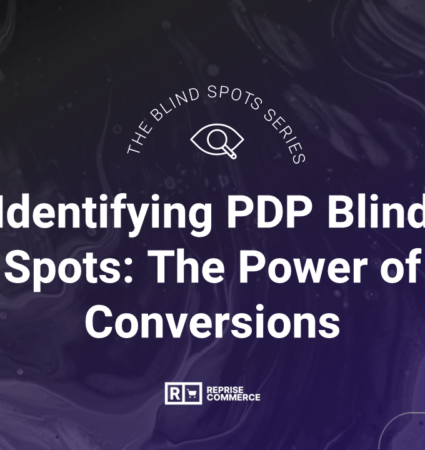For many global brands, eCommerce developed as a nice-to-have channel alongside traditional brick-and-mortar retail operations.
In recent years, however, eCommerce has grown its share of sales dramatically and is expected to reach seven trillion U.S. dollars by 2025, up from five trillion in 2021.
This has changed the game for business leaders. eCommerce is no longer an also-ran; it is firmly in the spotlight and the goal now is to solve for profitability.
Siloed sales and marketing teams, expensive returns processes, and faulty media strategies each represent significant holes in the leaky bucket of eCommerce profitability, but machine learning technology is making some headway in optimizing eCommerce businesses.

Digital advertising giants have invested heavily in machine learning, including TikTok Smart Performance campaigns (SMC), Google pMAX campaigns, and Meta Advantage+ Shopping campaigns, and marketplaces like Amazon have sought out AI tech to improve their fulfilment capabilities.
Below are 6 ways machine learning could help to solve the profitability question in eCommerce.
1. Smart targeting
Research shows that the more targeted an ad is, the more likely it is to drive conversion. TikTok Smart Performance Campaigns leverage machine learning to help brands optimize for actions such as clicks, app installs, or purchases.
The algorithm analyzes the user’s behavior, identifies patterns, and shows ads to people most likely to take the desired action. This offers consumers a more personal ad experience while maximizing the brand’s budget.
Bolt ran a 14-day A/B test campaign with Smart Performance Campaign that lowered CPA by 27% and generated 40% more purchase actions.
2. Optimizing media spend for profit metrics
Google’s pMAX campaigns use machine learning to optimize bidding strategies for maximum profit. The algorithm uses data from previous ad performance to determine which placements are most likely to generate conversions.
This enables advertisers to bid more aggressively on these placements, increasing the likelihood of a profitable outcome. The pMAX system also adjusts bids in real-time to respond to changes in market conditions.

3. Increase personalization
Meta Advantage+ Shopping campaigns, formerly known as Facebook Dynamic Ads, leverage machine learning to deliver personalized shopping experiences to users.
The algorithm analyzes user behavior and serves them with relevant product recommendations. This approach not only improves the user experience but also leads to higher engagement and conversions for advertisers.
4. Dynamic creative optimization
Google, TikTok and Meta all now use algorithms to analyze ad performance data and then determine which creative elements, such as images, headlines, and CTAs, are most effective for different audience segments.
This allows advertisers to optimize their ad creative in real-time, resulting in higher engagement and conversion rates.
5. Pricing optimization
Elsewhere in the eCommerce ecosystem, machine learning algorithms can analyze market demand, competitor pricing, and historical sales data to optimize product pricing. By setting the right price for each product, eCommerce businesses can maximize profits while remaining competitive in the market.
Amazon is the king of pricing optimization, with research showing that a product’s price on the platform changes every five days on average. However, many third-party sellers on the Amazon Marketplace have also adopted AI-powered pricing and as the technology becomes more accessible, more brands stand to make profitability gains.

6. Inventory management
Having the right amount of stock on hand is an incredibly complex question to solve. Machine learning can help brands to optimize inventory by creating better demand forecasting, recommending inventory purchases and predicting stockouts. This tech can help brands to address these issues before they harm profitability.
Amazon – alongside other large marketplaces such as JD.com and Alibaba – leads the way in machine learning for inventory management, using AI to analyze customer behavior, product data, and other factors to make accurate predictions about what customers will buy and when.
Amazon’s Subscribe and Save program enables customers to receive recurring shipments of products like household essentials and pet food at a discounted price, whilst helping its inventory management. The system analyzes customer purchase history and usage patterns to predict when customers will need a refill and automatically sends the products to the customer at the right time.
Will AI solve the profitability question in eCommerce?
Whilst machine learning can help brands to optimize their eCommerce operations, there are many other important considerations on the road to profitability, particularly when it comes to connecting advertising and retail dollars and ensuring siloes are broken down.
If you’d like to speak to one of our 350+ commerce experts about choosing the right tools and strategies to make eCommerce profitable, please get in touch.
Subscribe to our newsletter










